
Late Fall 2023 Miramichi and Cains River Salmon Blog
Fishing Friends:
On September 20th, after Hurricane Lee passed, I drove from Maine back to the Miramichi to attend an MSA meeting. The Blackville water gauge was broken for both water height and temperature. The water height, though, was something like 2.5M – essentially unfishable – and it was still over 1.3M on October 1. Every fish that we caught from September 20th on was caught up on the Cains. We did try the Miramichi from time to time, but the river was high and seemed barren. I did get reports of a few fish caught and seen each week from Eddie Colford at Black Brook. Mark Cabot, fishing at Ted Williams White Birch Lodge lost a big salmon the evening of October 8th and Jay Crowley fishing at Mountain Channel got one a few
days later, but it was very quiet. The fall run, normally a staple of Miramichi fishing, was very weak during 2023.
Without question some of this is simply that the salmon run in 2023 was down from other recent years following a trend line that began when striped bass numbers went off the charts back in about 2010. As John Bagnall, salmon biologist and conservation committee chairman of the New Brunswick Salmon Council recently described it: “One year after the bass explosion in 2011, the returns of grilse in 2012 plummeted. Return rates have continued to decline as annual bass spawning stocks have remained in excess of 200,000. The bass stock reached almost one-million spawners in 2017, and was at almost 500,000 in 2022. Maiden two-sea winter salmon returns also crashed after the bass population explosion. Because of excellent survival of repeat spawners, the MSW decline lagged that of grilse and maiden MSWs, but total MSW returns are now also very low compared with historic levels.”
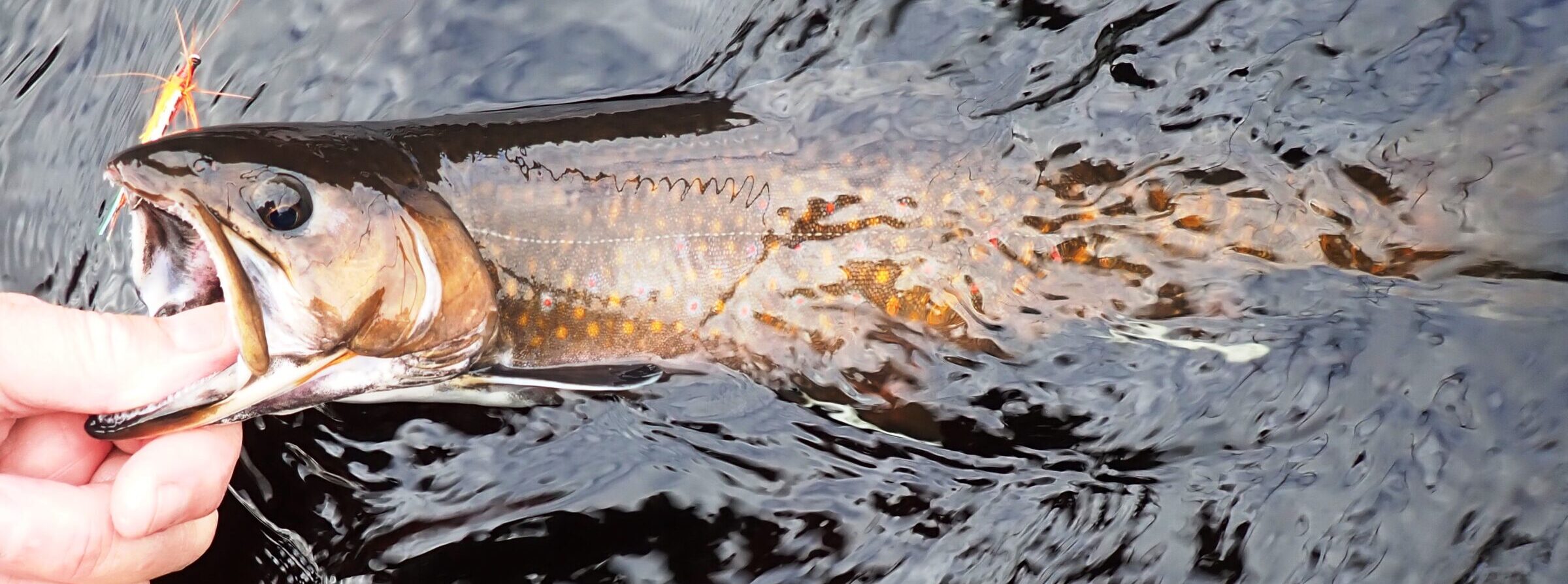
The fall of 2023 was a good one up on the Cains for brookies – not sea runs – but just riverine fish like this beautiful hen of about 16 inches that took an October Killer streamer cast for salmon.
Despite the overarching reality of reduced runs, I don’t think that the 2023 salmon returns, especially the summer portion of the run, were as bad as the trap numbers may end up indicating. I believe that for several reasons:
- First, it is well known that the Millerton and Cassilis counting traps catch less efficiently when the water is high, and the extent of high water in 2023 was simply unparalleled in modern times.
- Second, the numbers indicate that the heart of the salmon run that we did get came during the mid and late summer – a very unusual time compared to most years.
- Third, we saw a lot of salmon going up the river in late June and early July. It appeared to us equal or better than most recent years, but at least in part due to the high water the trap numbers didn’t reflect this.
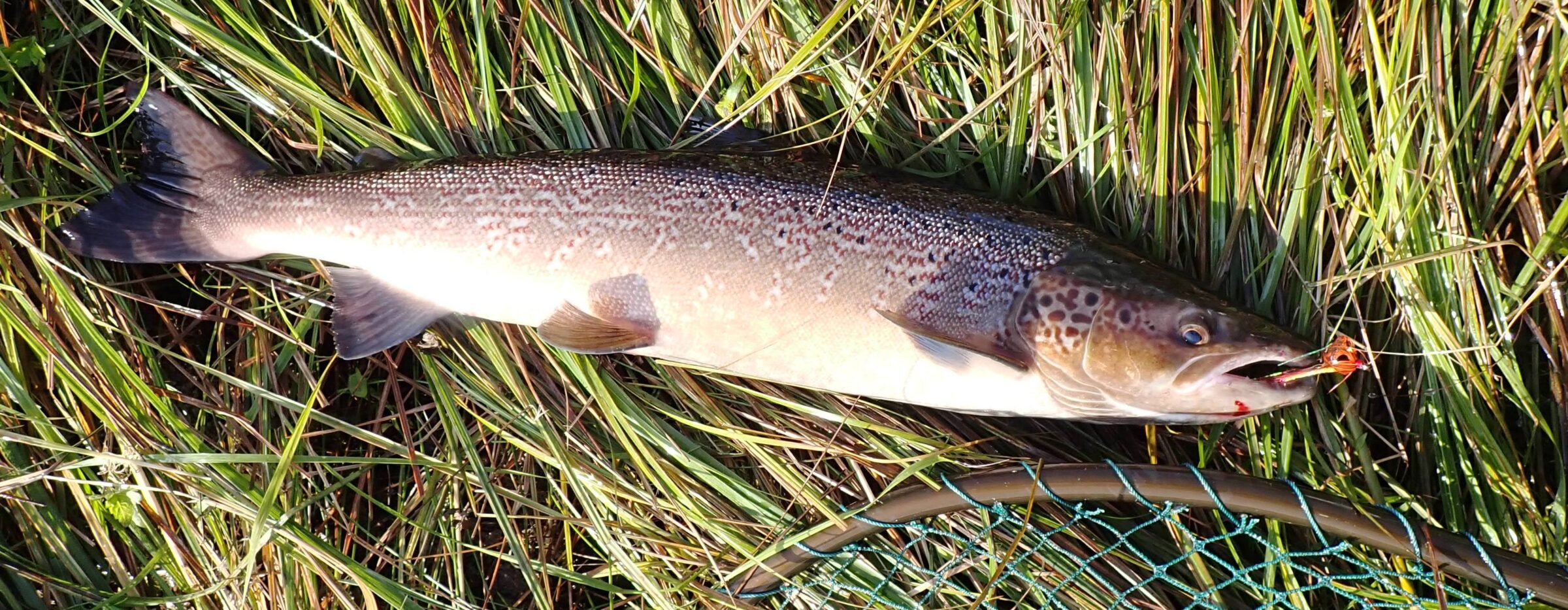
Feisty fall grilse like this continuous jumper from Mahoney Brook in late September were hard to come by in 2023.
Let’s look at this information for salmon captured year to date in the Millerton trap:
Date 2022 incremental 2023 incremental
7/1 96 29
7/15 222 126 36 7
7/30 238 16 60 24
8/15 251 13 94 34
8/30 265 14 116 22
9/15 272 7 132 16
By incremental I mean the number of salmon that came between the dates recorded. For instance in 2022 there were 96 salmon on July 1, and 126 entered the trap between then and July 15 bringing the total then to 222. At Campbell’s we caught exactly the same number of salmon in 2022 and 2023 up through July 9 – when I left to go to Newfoundland. The equal catches occurred despite the tremendous disparity in the numbers of fish that were caught in the Millerton trap net through July 15. Also, the fishing height of water, while still on the high side in 2022 was much better than it was in 2023 – which should have pumped up 2022’s catch over 2023 – had there been lots more fish present. But it didn’t happen.
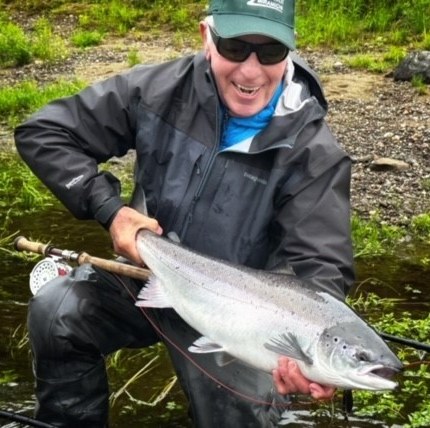
A last look back at one of those beautiful silver beasts from June fishing caught by angler Shya Kane. Photo courtesy Country Haven. .
So now look at the incremental catches – one time period to the next – beginning for the two weeks ending on July 30 and for every period through September 15, and you’ll see that in every two-week period the trap recorded more fish in 2023 than 2022.
Another important piece of evidence are the barrier numbers. Unlike the traps which operate at a variable percentage of effectiveness the barriers catch every fish that makes it that far. There is one on the Dungarvon, a branch of the Renous River. The Renous is really a separate river that shares the same estuary as the SW Miramichi merging with the SW at Quarryville. There is another barrier on the NW Miramichi. The Miramichi Salmon Association operates these barriers for the New Brunswick Department of Natural Resources. I’ll save you all the statistics for now, but the Dungarvon numbers are actually up from last year when it comes to grilse although they are down for salmon. In total the Dungarvon Barrier counts are off about 15% from last year. The poor grilse numbers shown below for the NW represent almost a total collapse of the run. This would certainly agree with the idea that the NW – the dominate spawning branch for the bass – smolt run is being destroyed by the bass. Sea run brook trout are also recorded at the barriers and they too are in serious decline on both branches.
What did the trap counts and the run look like after the hurricane? The Millerton trap has simply been shut down most of the time since the nets were removed for Hurricane Lee sometime before September 20th. I’m told that the Cassilis trap on the NW is operating, but between October 1 and October 15 it recovered no salmon and just 1 grilse. This all jived with my observation that there were just very few salmon seen ascending the main river in the latter part of the season. So, a poor year, yes, and especially so on the NW Miramichi where the damage from stripers is by far the worst. But I am quite confident that the number of fish swimming into at least the Millerton trap up through July 15 did not reflect the real strength of the early run.
It isn’t easy to overstate how much water we had on the Miramichi in 2023. As you know, 2022 was a high water year by any historical standard. The graph below, though, will show you that there was no comparison between 2022 and 2023. Throughout the 2022 summer season the water height hovered at just over 1 meter. That’s about four tenths of a meter or 16 inches higher than normal, and cooler than average too since the sun has a hard time heating that extra water. This invited salmon up the river and mid sections of the Cains that normally don’t produce until late September were having good fishing in mid-July. In 2023, however, the water averaged more like 1.5 meters or about another 16 inches over 2022 levels. In essence, I believe this nearly constant 30-inch above normal level caused the salmon to just run on up the river.
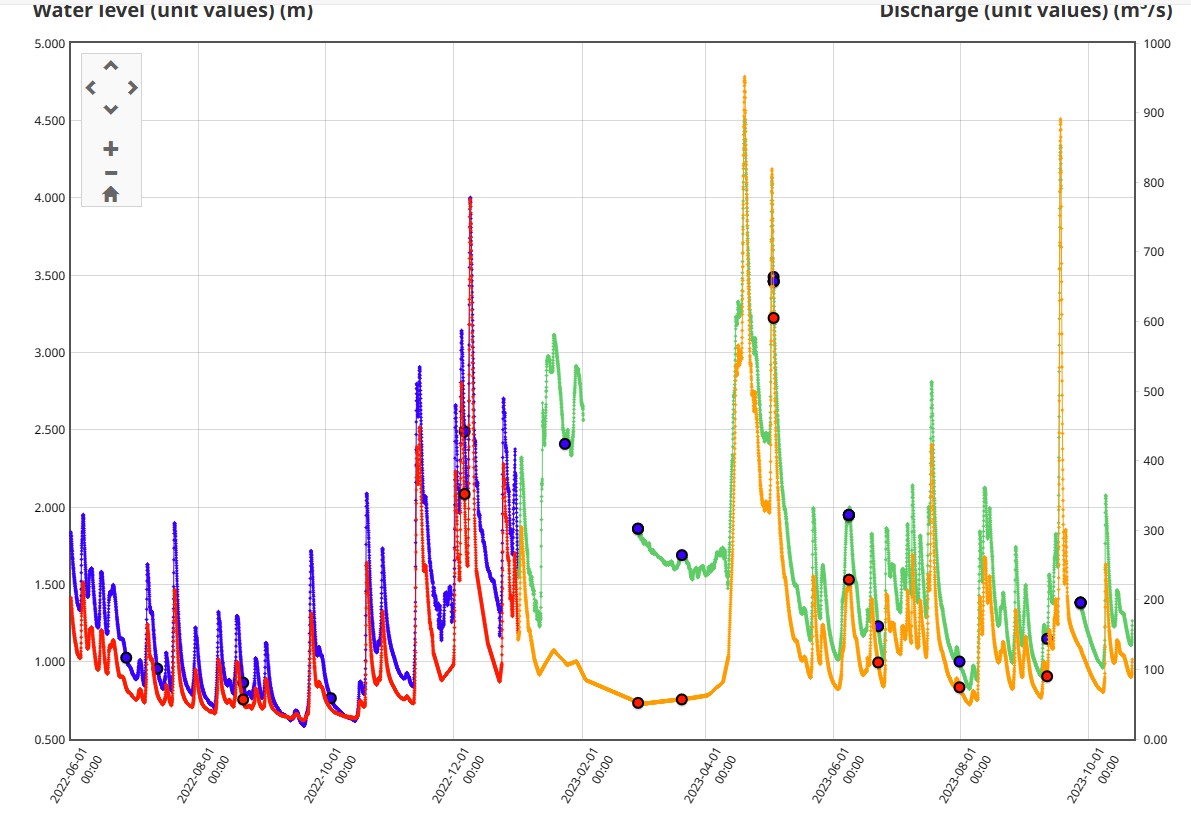
This graph shows water height from 6/1/22 until 10/15/23. The blue is the 2022 water height and the green is 2023 – averaging a half meter higher during the fishing season.
The huge raises from Hurricane Lee took the river up to 4.5M in height. This carried most of the main river fish far upriver much earlier than normal. Reports that I heard from areas like Juniper were that there were a good number of fish in pools that far upriver, some 125 miles above the head of tide. Naturally the fish were spread out on the Cains too. When the season ended on October 15 there were salmon being caught every day on the Cains from the headwaters all the way to the mouth, a distance of some 60 miles. I had reports from all over the Cains, and it seems to me that there was no great concentration anywhere, though it sounded like the fishing was much better upstream of the Grand Lake Road bridge than below it. Taken cumulatively and including the fish from late July through early September, the rod catch on the Cains for 2023 was not bad.
The big water did have some benefits. One of these is, as past MSA President Mark Hambrook explained to me, that predators of the young salmon had a tough time catching them in the high silty water. While the measurement is purely anecdotal, I did note in my fishing up on the Cains this fall that there was no shortage of parr of all sizes. One afternoon, for about two minutes, I saw a small group of mergansers rounding up small fish on Keenan Bar, across from the Campbell’s camp. It didn’t last long though, and it was nothing compared to the mammoth flocks that I have witnessed almost daily in earlier years lined up chasing fish across vast stretches of shallow, clear and well illuminated Miramichi water. The conditions may have also frustrated the seals hunting adult salmon in tidewater, at least I hope so.
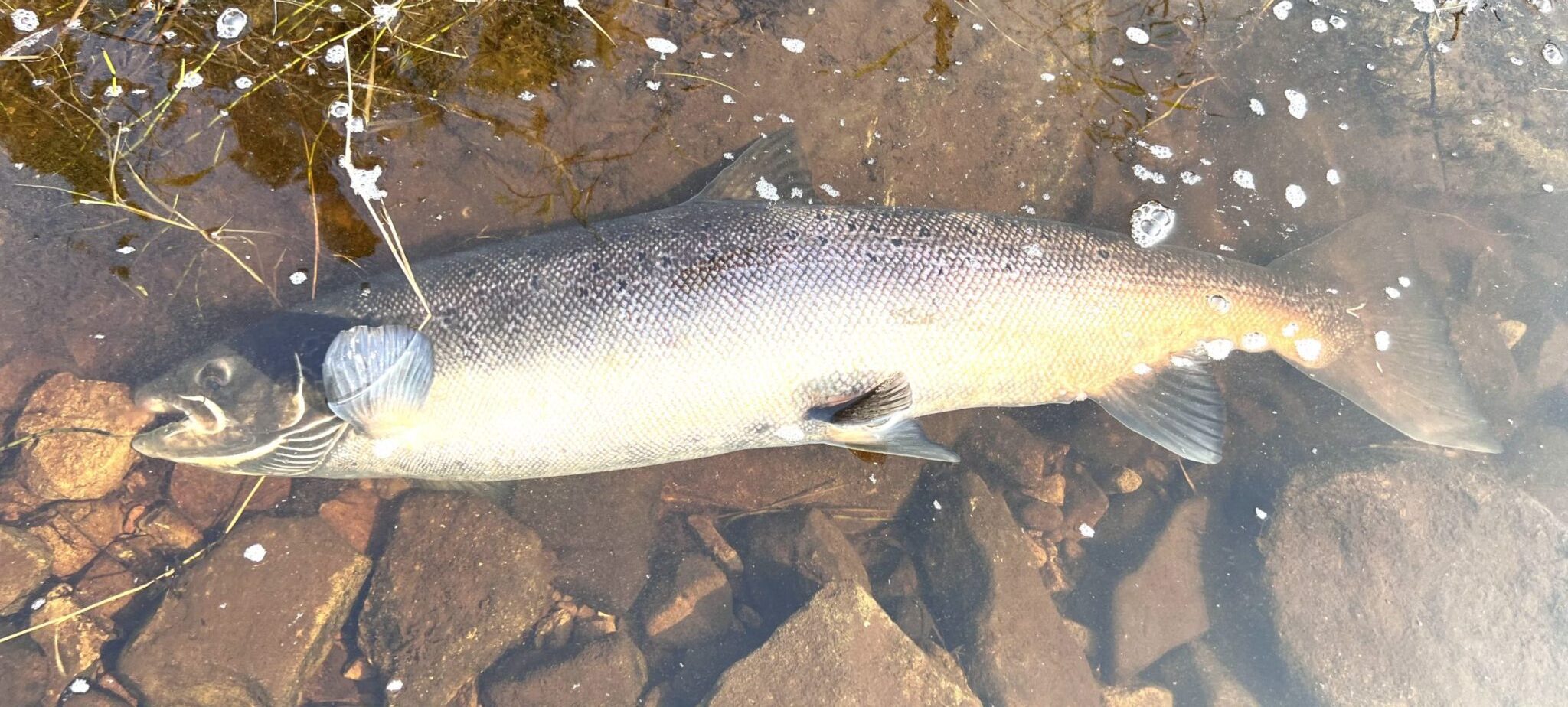
This lovely Cains hen was one of my better fall fish in 2023. It took me well into my backing – twice.
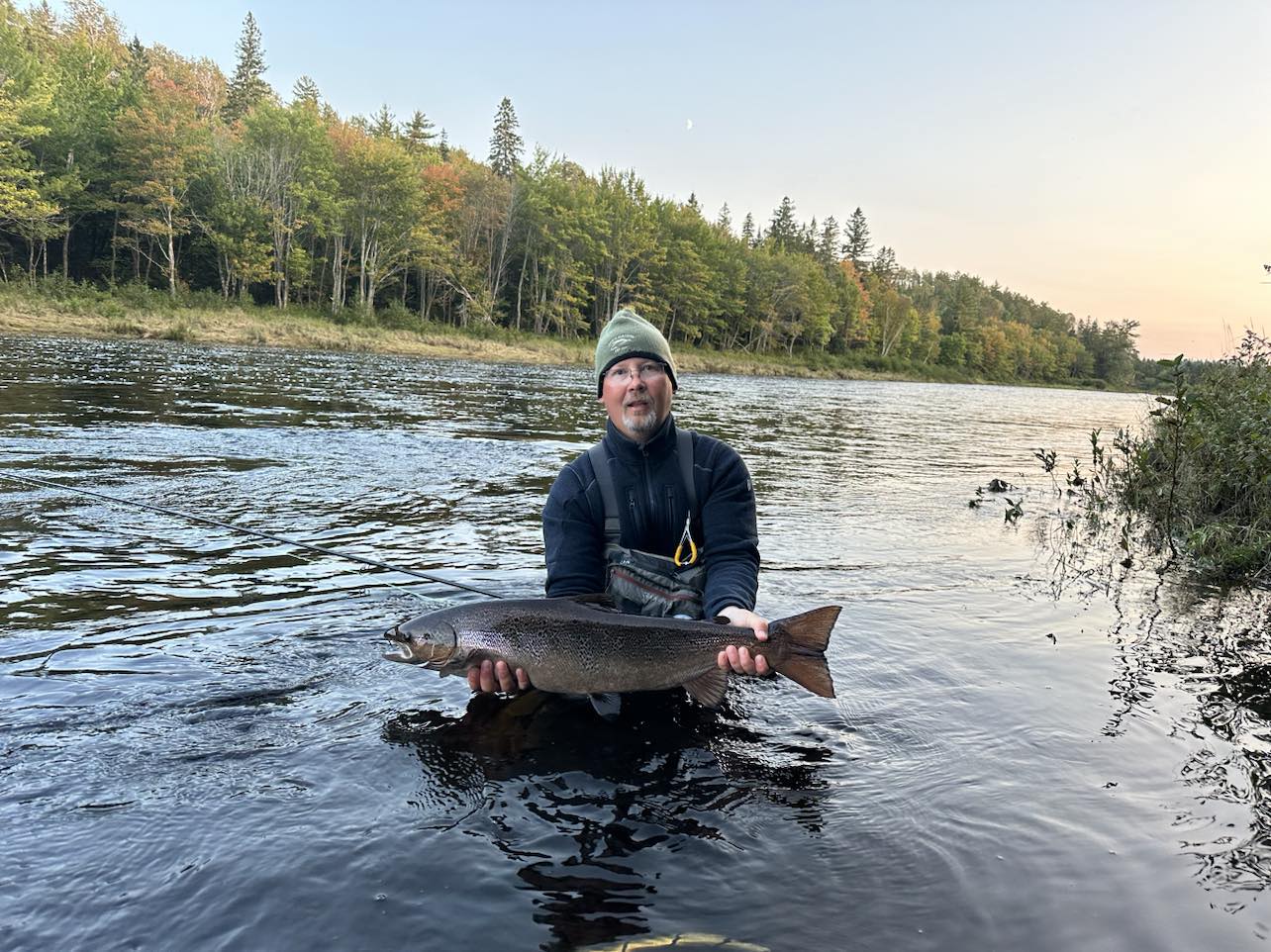
Andrew Moy was not to be outdone by wife Nancy. He caught the first fish after the hurricane raise. Country Haven photo.
While I greatly missed fishing our low water pools of Papa’s Rock at Keenan’s and the Doctor’s Island bar – neither pool produced much of anything this year – it was heaven itself up at Mahoney Brook and all the upper Cains River pools. Day after day we had the strong water flows and lovely heights of water that we hunger for most seasons. But we had a precious few days when the fish were there and would take. There are three pools that we fish regularly from the Mahoney Brook camp. One day I hooked and saw fish in all of them. I slept well that night. Other days, though, we flailed away at beautiful appearing but nearly empty pools. Salmon will be salmon, though, and even when we managed to have a few fish holding they wouldn’t necessarily take a fly.
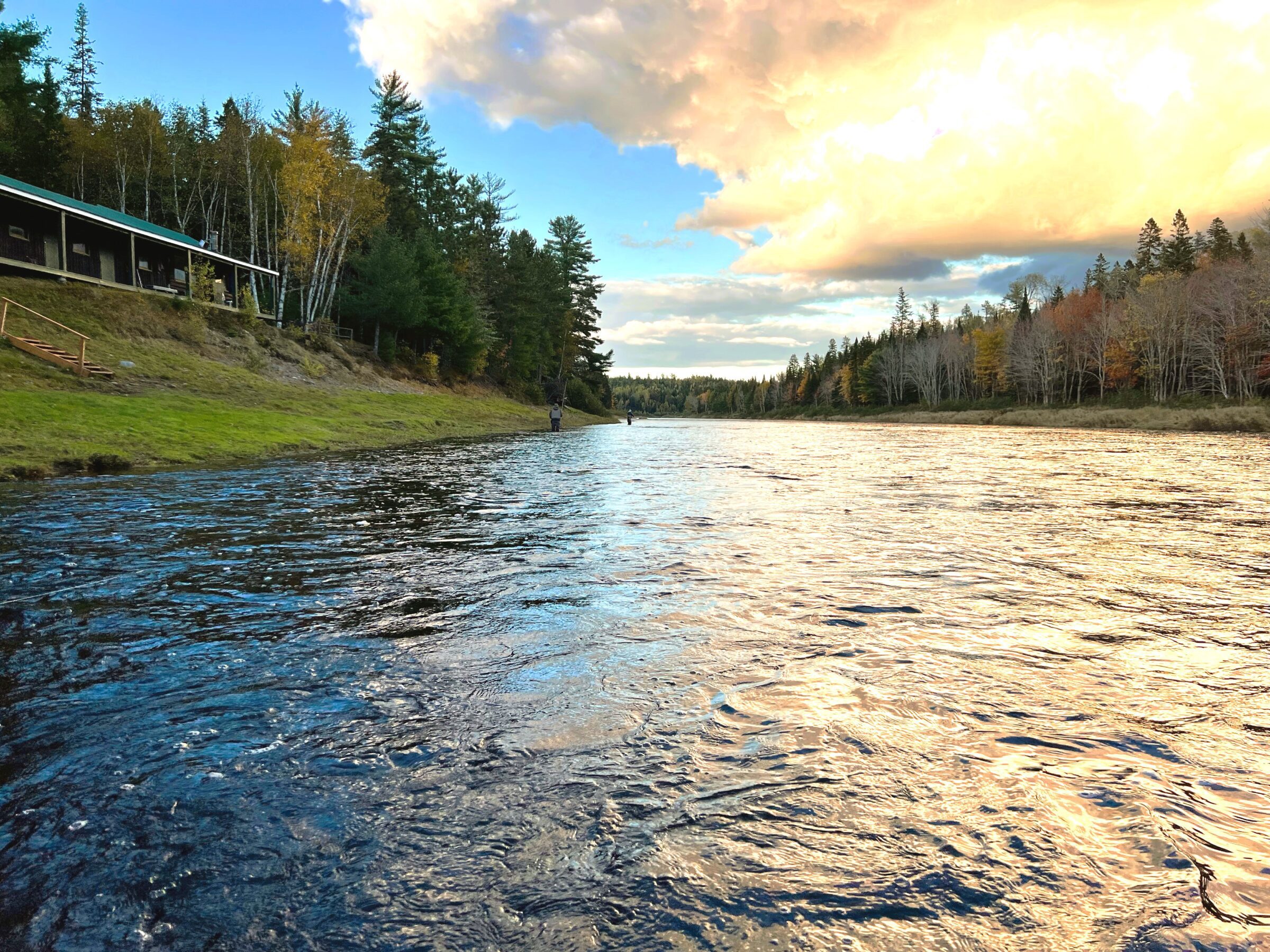
Doctor’s Island Club member Bruce Angiolillo took this photo of the historic old Muzzerol Pool and club camp on the Cains.
Some Cains pools a couple of miles downriver from Mahoney Brook, like the ones Country Haven fishes around the mouth of Muzzerol Brook had improved fishing. One day Doctor’s Island Club members Pat Boland and Jake Swan, fishing their Cains property, hooked 6 salmon and grilse. That’s a terrific day by modern standards.
We also couldn’t blame the weather this fall which was milder than average, but never hot. We had a lot of overcast days where it would be relatively cool in terms of the daily high, but instead of frost in the morning fishing required only a good sweater and baseball cap. Water temperatures hung in the mid-50s. One thing I hate is salmon fishing in bright sunlight. Thankfully we had very little of it this fall.
Before going up this fall I got a couple of the new Scandi Launch Spey lines. I was a little skeptical as to whether these lines would be much different than the earlier Scandis. What I found was that the new lines had slightly thicker butts and finer front tapers. The real advantage came with the tapered mono leaders that I greatly prefer to cast and fish with. First, the new taper was just plain easier to cast, second the landings seemed a bit gentler, and third they just plain added more distance to my casts. Perhaps the greatest endorsement of all came from my right shoulder which felt just as good after a month of casting every day as it did before I left on the fishing trip.
Rio Slickshooter in 50-pound-test became my favorite Spey running line. Because of poor experiences years ago with Amnesia mono and single-handed rod shooting heads I was close-minded to the mono lines before last season. This season and last I tried several lines made with new materials that are neither standard, PVC coated lines nor mono, and tried Rio’s Gripshooter which is the Slickshooter mono but with a length of PVC coating to help you hold onto the line. I tried some of Rio’s competitor’s too including the Varivas hollow mono running line. I found that the Varivas did not really float and that none of the “new material” lines I tried shot as well as the Slickshooter mono.
Mono slippage on the cast can be a problem if you only squeeze the line against the rod with your upper hand. I do squeeze the line against the rod, but in addition I also use a little technique of placing the line over the reel and also holding it against the butt with my lower rod hand. It’s easy and comfortable with a little practice, and it cures any slippage issues.
I also find the thickness of the 50-pound-test line – compared to lighter pound test ratings – makes it more comfortable to not only hold when casting but also to strip. The Slickshooter mono is still relatively slim, hard, slick stuff and it just flies through the guides. I also find that the 50-pound monon resists tangling and twisting much better than lighter mono. The mono is inexpensive, and I just tie an 8-inch loop with a double- surgeons to connect it to loop-to-loop with the head. Once a month or so during daily fishing I just cut off the loop and retie to keep the knot from fatiguing. Even though the mono is inherently slick, it can get dirty, and I try to clean it frequently. I wear a light glove on my right hand for stripping, and I do an occasional quick clean by putting a drop of dry fly floatant on the glove where I strip in line. It works pretty well.
There is a big discussion to be had here about conservation. I’m going to leave that for another blog that will be coming up not too far down the road. Some very smart people are working hard to develop plans to turn around the Miramichi salmon downturn and how DFO can be convinced to adopt those plans. I’m optimistic. I’ll get back to you soon with a report on progress on that front.
Thanks for reading. Brad


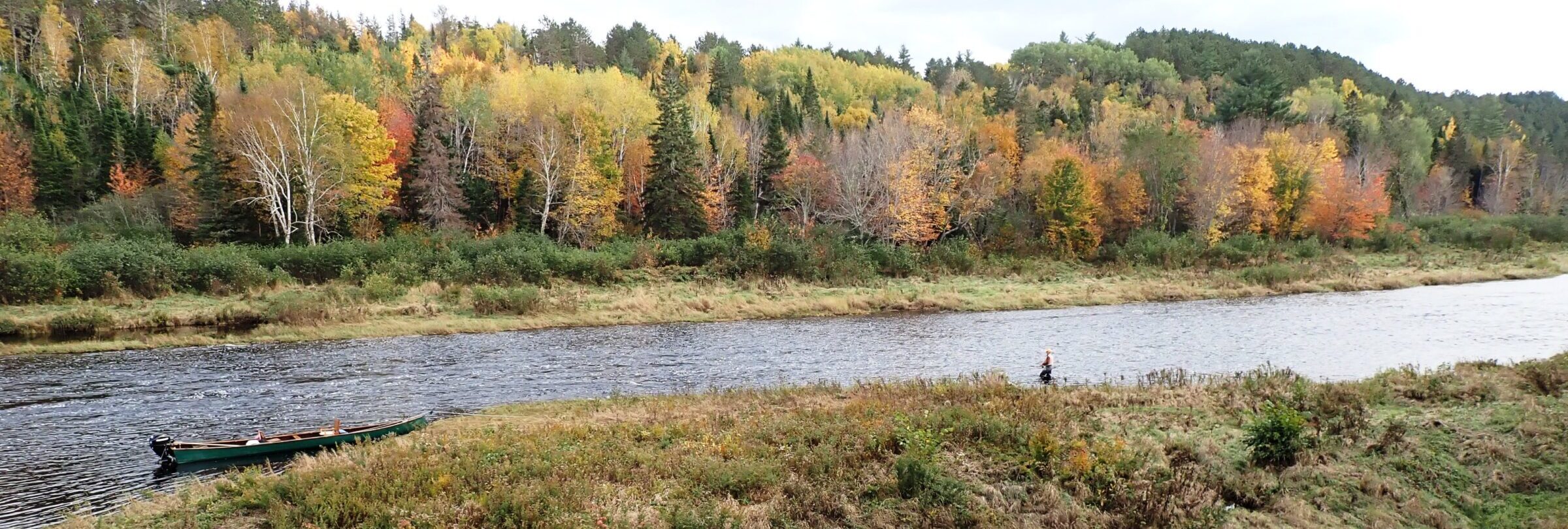
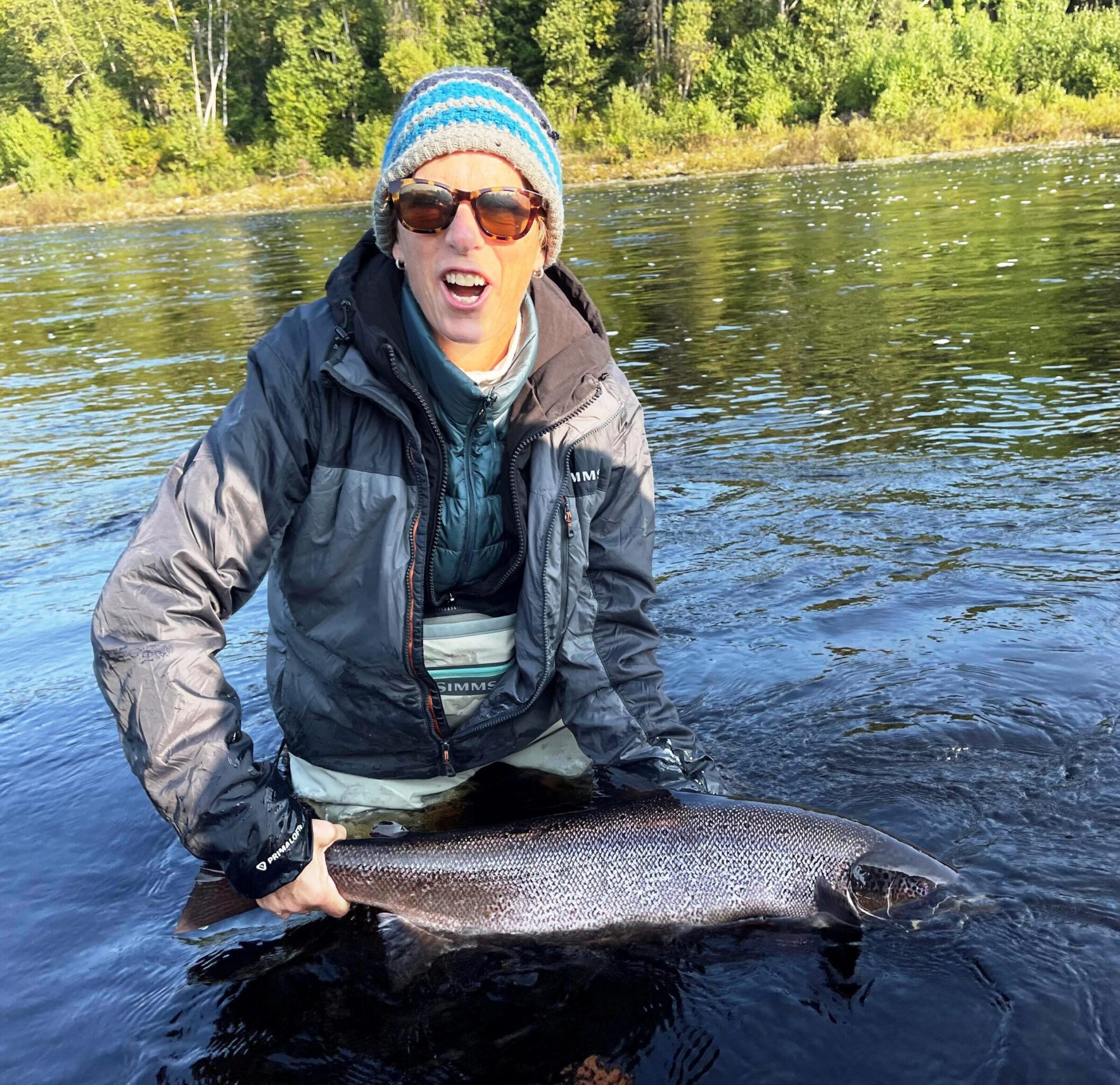
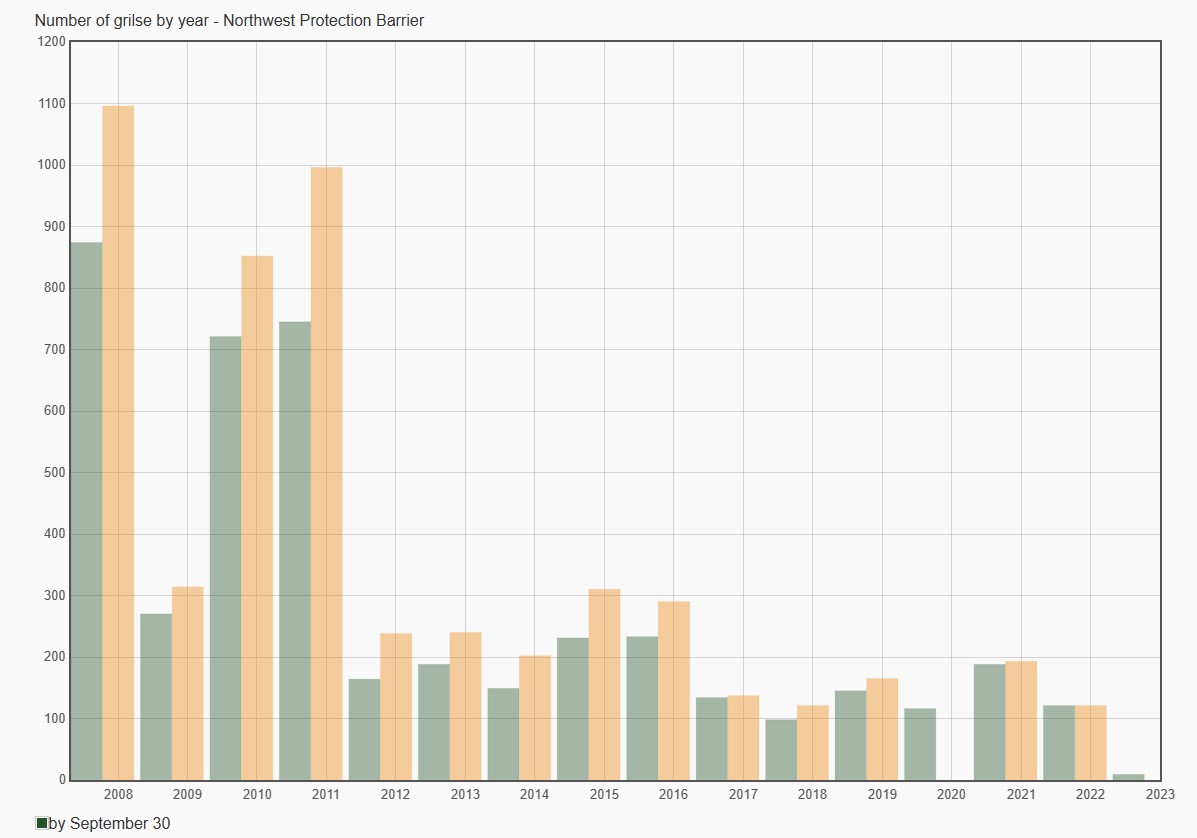
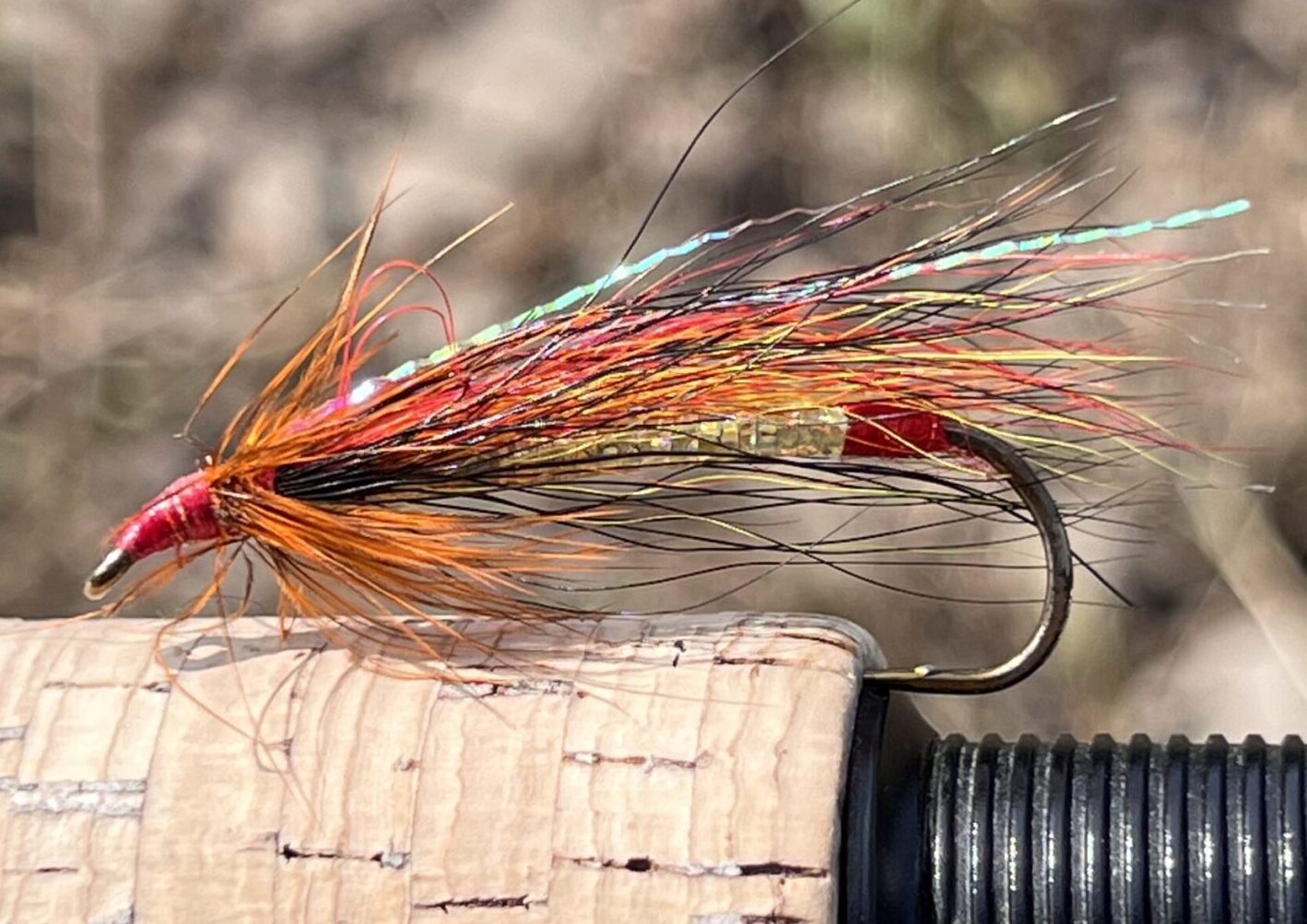
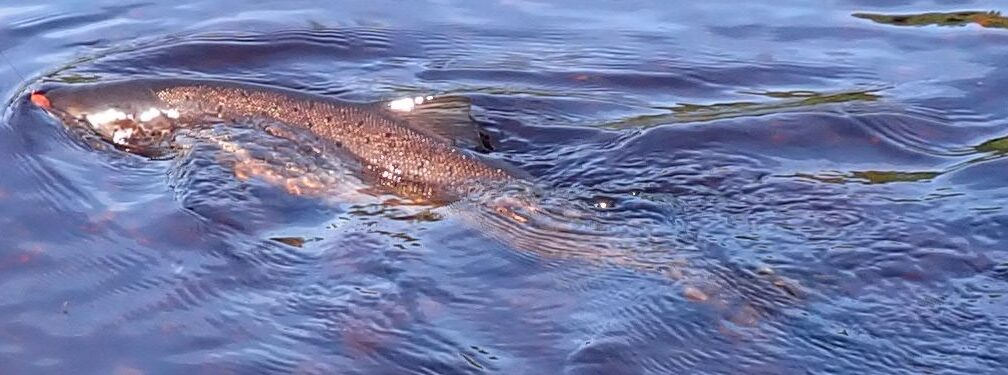
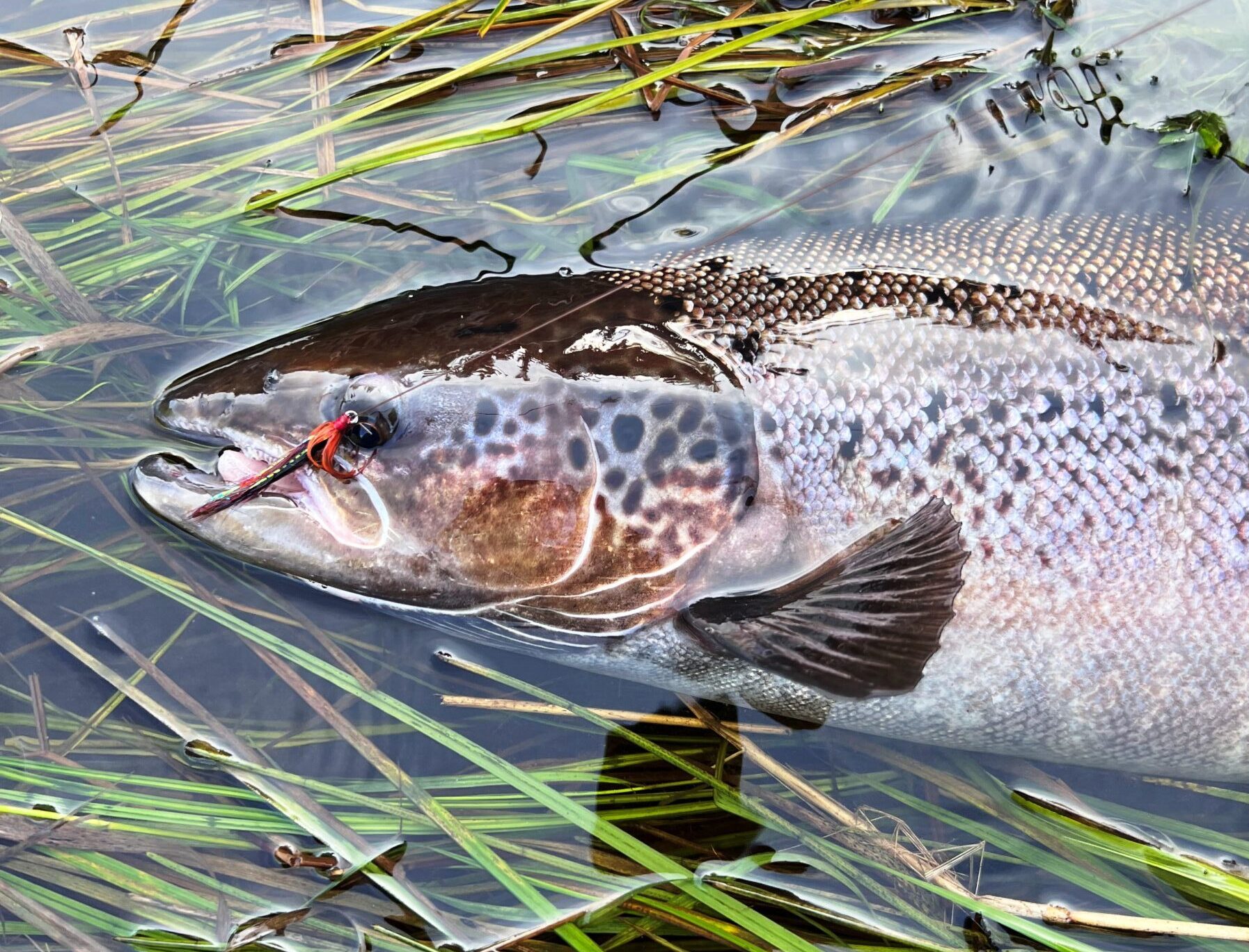
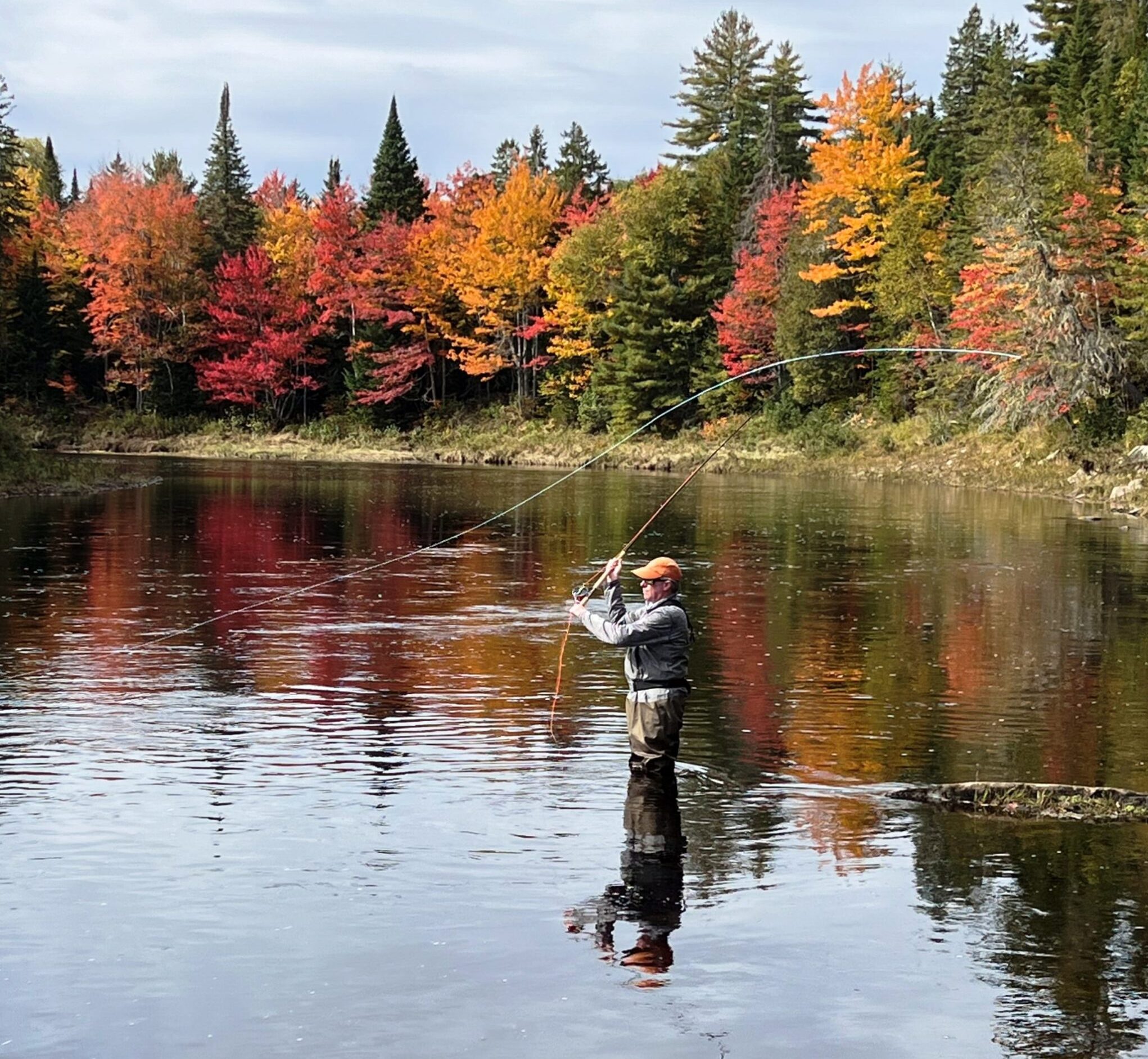
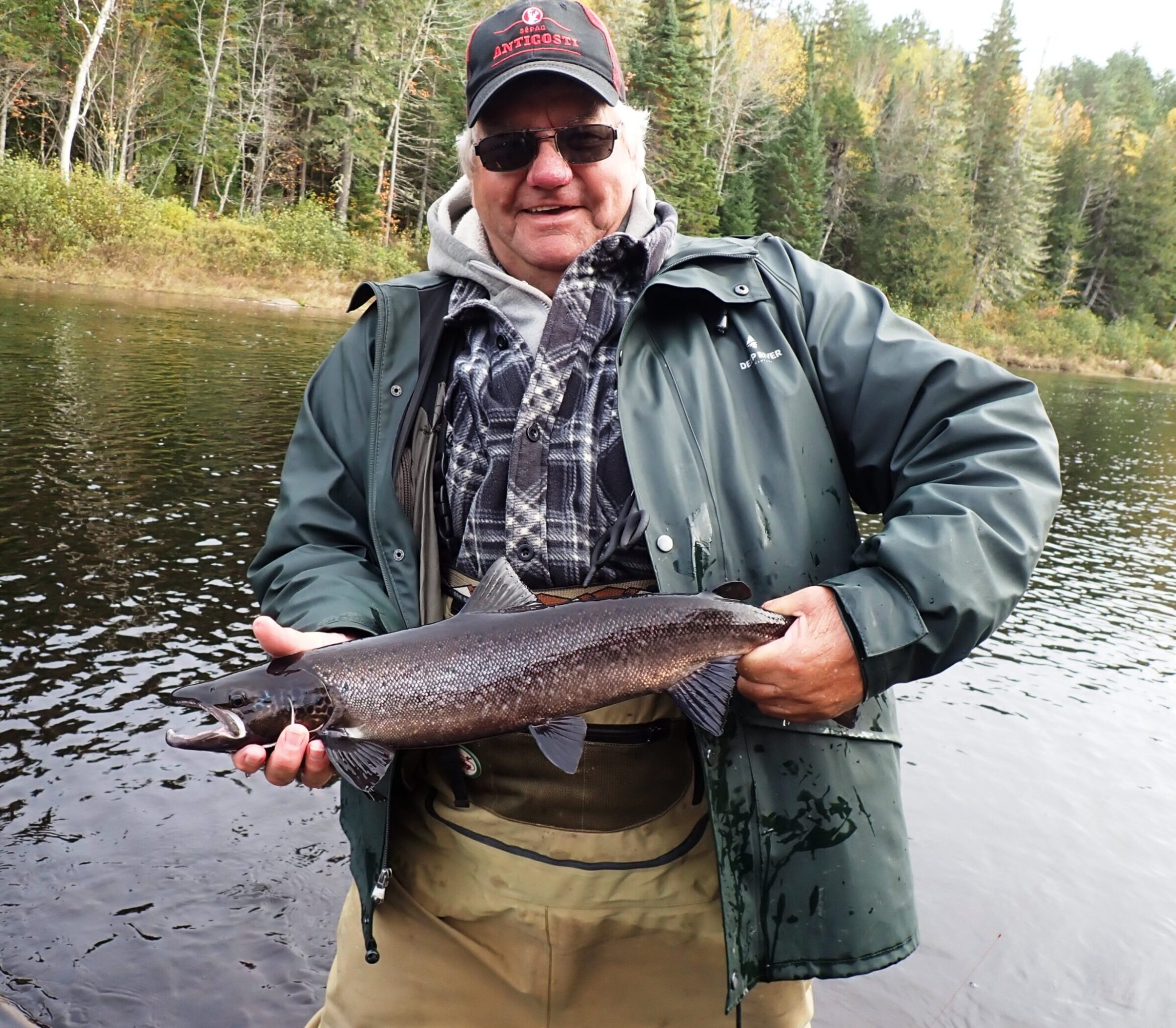
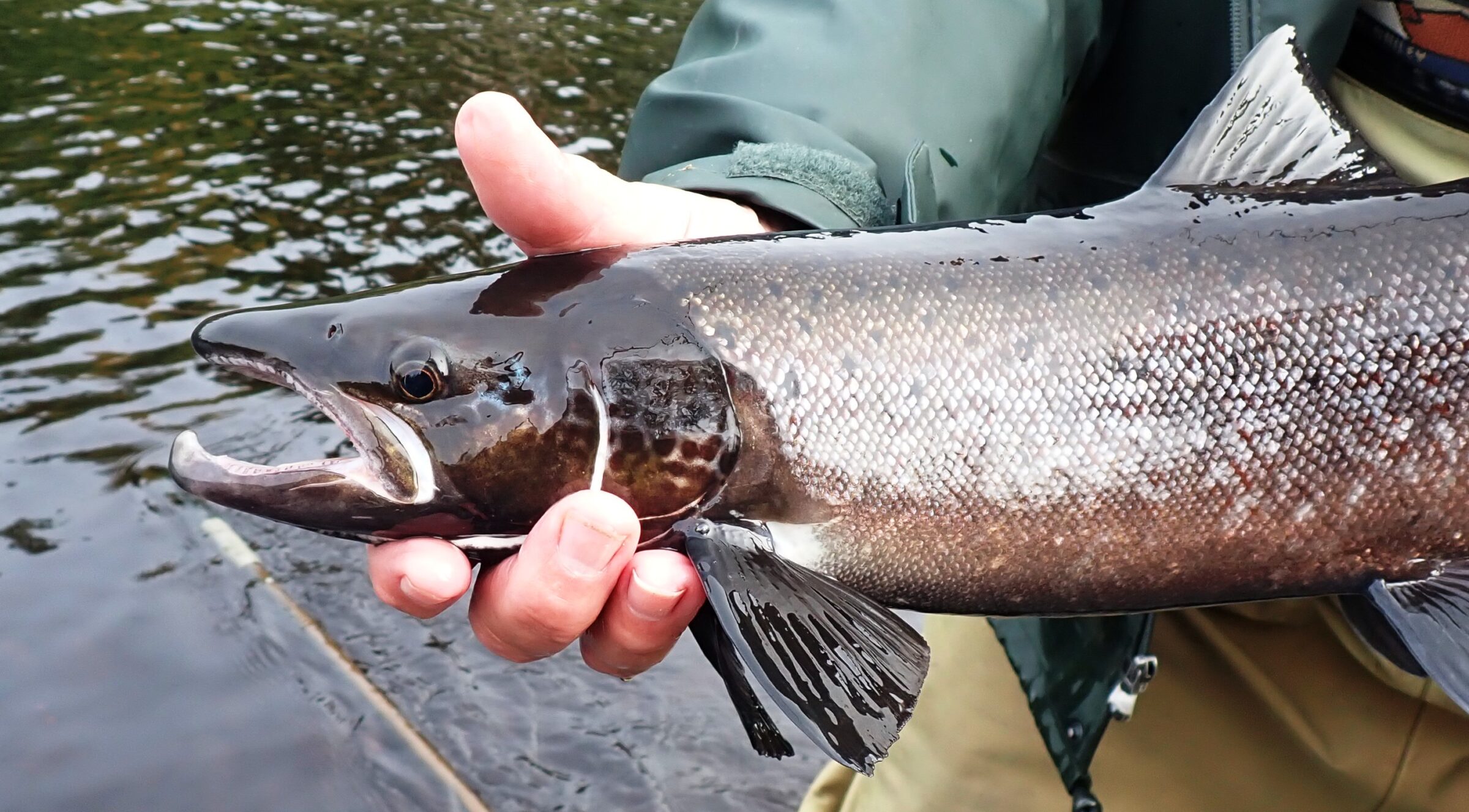
Fishing for over 25 years.DFO has done nothing but supervised neglect.Anywhere else that is malpractice.There are no more fish in any quantity.A near dead sport except for a few diehard older sports.One should not have to go to “private cold water pools” or other exclusive private pools with the “hope”of hooking a fish.There are many beautiful open water pools on Miramichi and Cains Rivers that do not yield fish under perfect conditions.Bottom line(no pun intended) there are no fish left to return for many reasons that have been well documented.Sad!!
Thanks for your comments Michael. The private and public pools have been hit equally from what I can see, but that is more or less beside the point. You are correct that DFO has done nothing but stand in the way of any programs to help the Miramichi salmon. They have allowed a little experimentation around he edges, but nothing that would really make a difference. I hear that a new attitude may be developing in Ottawa. I hope that is right.
Sure will be interesting to see how whomever gets DFO’s thinking about Atlantic salmon conservation/striper populations reversed, or at the very least, gets them thinking intelligently. Hope they have a big stick to swing.
GT
Having fished the Miramichi for over 30 years and witnessed the steady decline in returns, I’m disheartened by its current condition. Has the resource reached the tipping point? Will this once magnificent resource be relegated to the annals of history alongside the Salmon rivers of Maine? The stewards of the river and of Atlantic Salmon (ASF, MSA) have identified and documented the many threats to maintaining healthy runs but have been ineffective in leveraging the powers of the Canadian government to change their approach. The Irving Corp. wields more influence on the government while destroying the watershed with their blatant clear-cutting practices. Clearly out of touch with environmental concerns, yet infractions to established standards are overlooked. The threats have been identified and solutions are a “dime a dozen” and worthless unless these stewards of Atlantic Salmon don’t find the answer to the vital question: ” how do we get the government to hear us?” What goes on in international waters on the high seas is a more vexing problem to solve, but once the Salmon return to their natal river, it should be a focused effort to restore and maintain the healthy runs that historically generated employment for the communities in the watershed. Don’t tell me what’s wrong, I know the problems. Don’t tell me the solutions if you can’t implement them. For the Salmon’s sake, find a way to get action from the government before it’s too late!
Bill – the MSA has some very talented and dedicated volunteers trying to accomplish just what you are talking about. I believe that significant progress is being made. Brad
Breaks my heart to see this happen to the Miramichi. First fished the here in 1979. Never had the time or money to do it the way I wanted now I do and it dying. Don’t think anyone is coming to the rescue soon either as one or the NW outfitters was heard bragging about all the money she made fishing bass.
MSA is trying to help but where is ASF? All they talk about is radio tracking and dam removal in Maine which is good but those rivers are dead or almost. The Miramichi system still has a chance, where’s the help to save it.
Ed Ancas
Ed – the ASF has always been with the MSA on the need to balance the striped bass and Atlantic salmon populations. The need to do this is becoming better understood by DFO, but we still have a long way to go. The ASF did oppose and lobby against the CAST program something that many of us at the MSA very, very strongly disagreed with. In addition to reducing the striped bass population all the experts that I am talking to believe that we will need to stock an immense number of salmon fry. These will only be available in sufficient quantity by raising adults in the hatchery from wild smolts. It is a very proven concept and has no conservation downside since in the wild only a tiny percentage of the outgoing smolts live to come back as adult salmon. Hopefully the ASF will support this or at least not lobby actively against it. We will know soon enough on that one. Brad